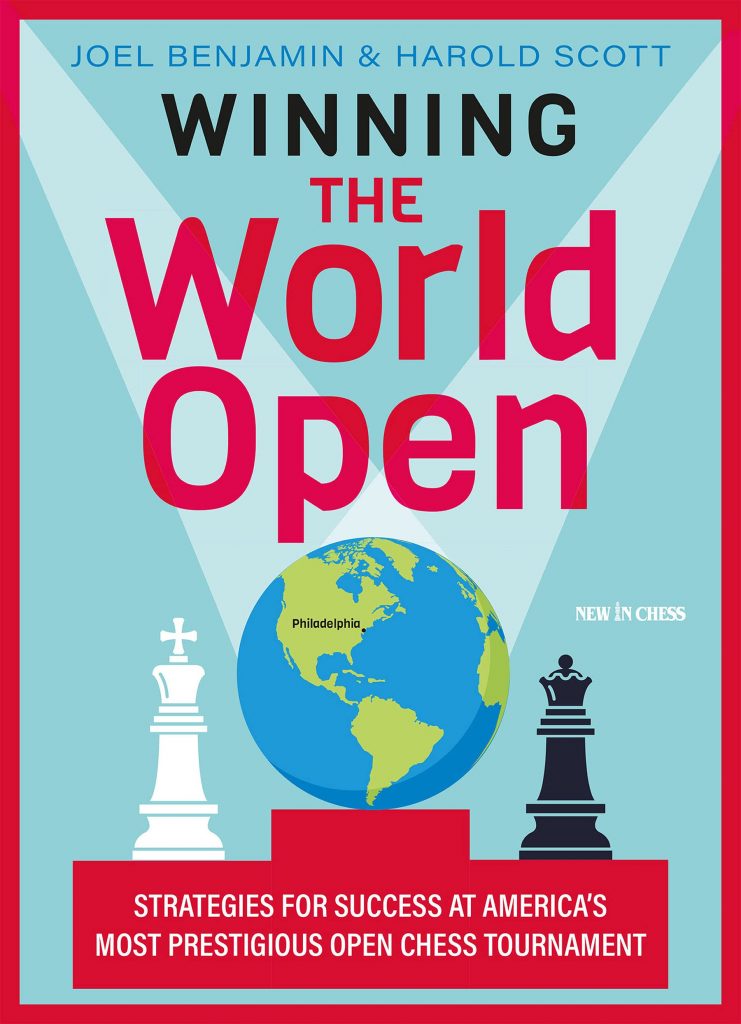
This is probably the reason why one needs a reviewer before buying a book. When I saw this title I thought: “Yeah that’s simply impossible… publishers are desperate…” and continued with my ramblings for at least 5 minutes all in my head…
Then when I received the book reading the back cover, I understood what the book is about. For those whose maximum attention span is Twitter, I’ll summarize it here:
“The authors present the history of the World Open from its humble beginnings to the juggernaut it has become today.”
This is what sold me the book, the history part. I have been twice at the World Open, and I must admit it’s a humbling experience, all players come there to fight till death or a little beyond. Some just prepare all year long to play there. I was able to win some money ($25) in a Rapid side event, but in the main tournament I scored badly.
Instead the first time I went I had a good performance, but my section was won by a Nigerian player, unrated, who at the end of the tournament had a 2055 provisional rating. After the game he told me in Nigeria was difficult to play tournaments, there was corruption, and other reasons they weren’t able to have a rating.
By the way for the World Open this is the norm, not something out of ordinary, the second player in my section was another unrated, who in the end had a provisional rating of 1924. In that time I was competing in the U1800 section!
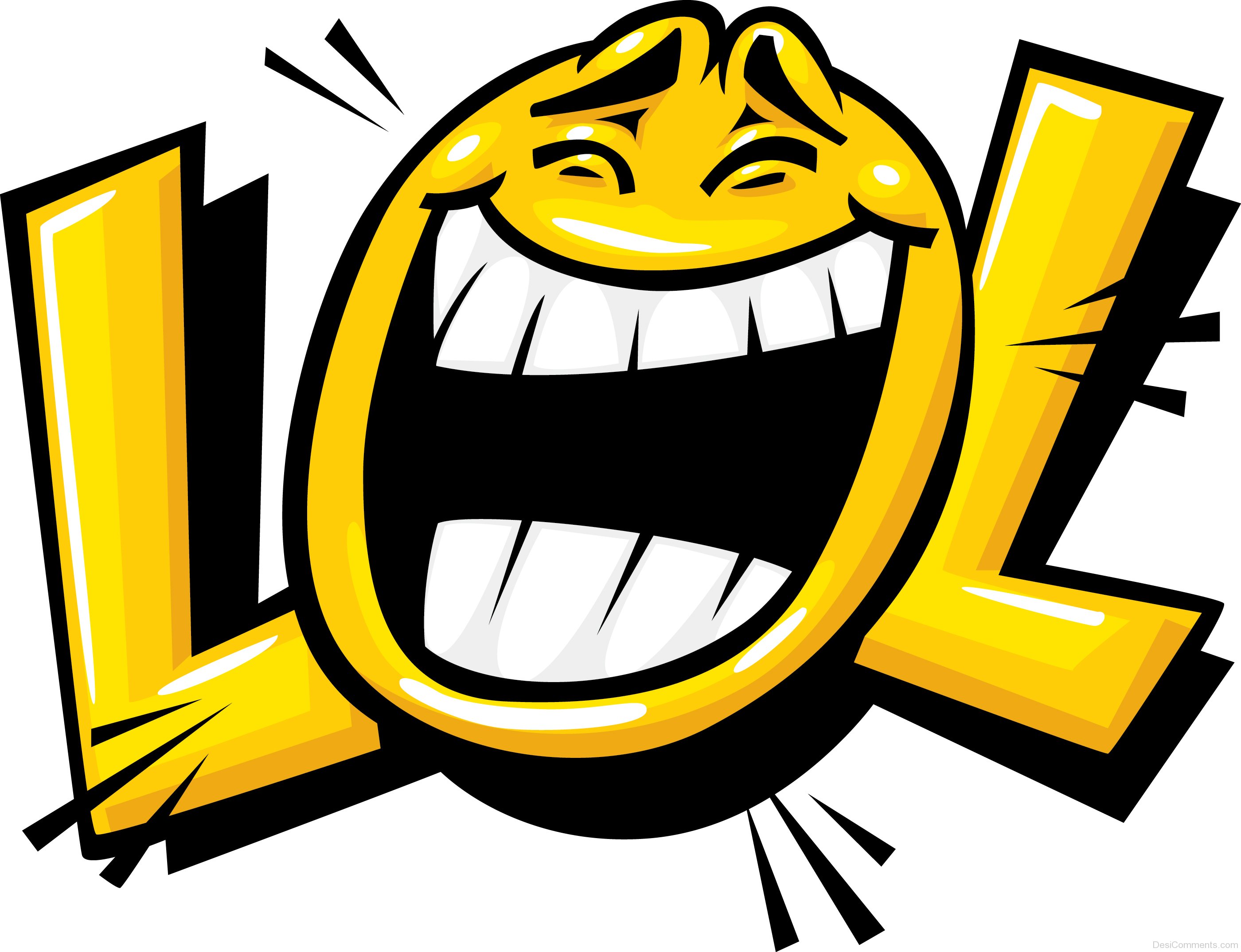
My great performance landed me 21st out of 204 players, after 9 bloody rounds! Not enough for money prizes. However Chapter 24 of this book is dedicated to cheating.
This reminds me of one of the players I played in my first World Open, I believe did cheat, and got caught. On the 7th round I lost my game, but when the tournament table was published I got a H, a kind of half point bye. But I played the game, and I definitely didn’t ask for a bye. Obviously they never said why… But this is the great thing of having Chessbase 12 (in that time, now 16) I inserted all my games after a tournament, so I know precisely against whom I played, and sometimes even some comments relative to outside things which happened. Like the fact that I was rated like 100 points above him, but I felt his positional understanding was at another level, definitely higher than mine, because he was prophylaxing all my future threats and ideas, and controlling the squares which would have been important for me, definitely not the behavior of someone rated 1624.
In chapter 24 they speak of cheating and mention the “consortium” which was a group of ex-soviet players who agreed to play as a team in order to split the prizes… this was already known to Fischer, but they called him crazy, yet today we find more and more evidence of such behavior in chess, especially when the players are from the same country!
The chapter also talks about more sophisticated electronic cheating, and also ID cheating.
But of course the book is not about cheating, which happens plenty at the World Open, but how and why some players find themselves consistently in the winner’s circle. A minimum of 7 points or over is needed. But from the book we discover in 1998 Alexander Goldin made 8.5 out of 9 to win first prize!
Every book begins with a Chapter One, this book is no different, and the first chapter is dedicated to the Man who created a chess tournaments empire, Bill Goichberg.

I actually met this legend in 2017, and got a selfie! Soon this picture will become a NFT worth million of dollars!
This chapter was quite interesting for me, because I saw the genesis of the actual model used by tournament organizers in US today, which is based on Bill Goichberg’s ideas from the 60ies! It’s like to be an archeologist, and see who put everything in motion. There is also a component related to the typical American business mentality, which I truly love. But the description in which some tournaments were run, gives an idea of the misery and bad conditions in which chess players were playing. As always the problem is the lack of a place where to run the tournament, which is the main problem we have had in Georgia till the moment we had a chess club, which could organize tournament without having to find a location first. But a chess club is limited in space so a big big event cannot run in a chess club. It also seems in the 60ies there were tournaments which were not run with clocks. Games were adjudicated after a certain period of time.
One important factor which is recurrent in American life is the following: Institutions and Government strangely are not able to make money, but individuals business oriented strangely can. At page 17 we read: “when Ed Edmondson transitioned from President to Executive director of the USCF in 1966, he took a look at the tournaments the federation was running in New York City, which were all at hotels. He concluded that the tournaments were losing money because of the fees charged by the hotels, and the cost of purchasing the chess equipment, So Edmondson told Goichberg that the USCF was not going to run these tournaments any longer, and that he could take them over if he wanted. These tournaments were the Atlantic Open, Empire City Open, and the Greater New York Open,”
For the Atlantic Open we are around the 52nd edition and the Empire city open is probably the 40th edition… Obviously it triggers the question: how is possible a non profit organization, the USCF, wasn’t able to run such tournaments, while a for profit person was able to run it for 50 years?
In this chapter there are many anecdotes and historical figures which makes it worth the price of the book. I was aware, but it was nice to re-read it again, of when Fischer was adjudicating games, and of course if someone disagreed with his judgment he would play the position for money to prove his point.
Chapter 2 begins the history of the results and the winners… there is something crazy in chess when someone rated 2045 outperform professional players!

But it happened in 1975 when the first place was shared with Benko and this unknown 19 years old.
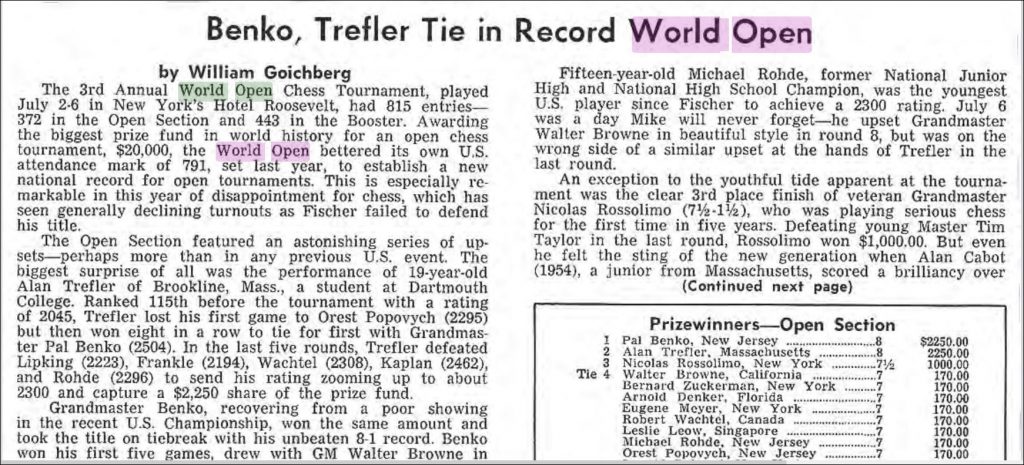
In this chapter one can witness the rise of some names, many of whom would become later GMs, like Benjamin, Fedorowicz, Henley, Rohde, or Kopec who became IM (RIP).
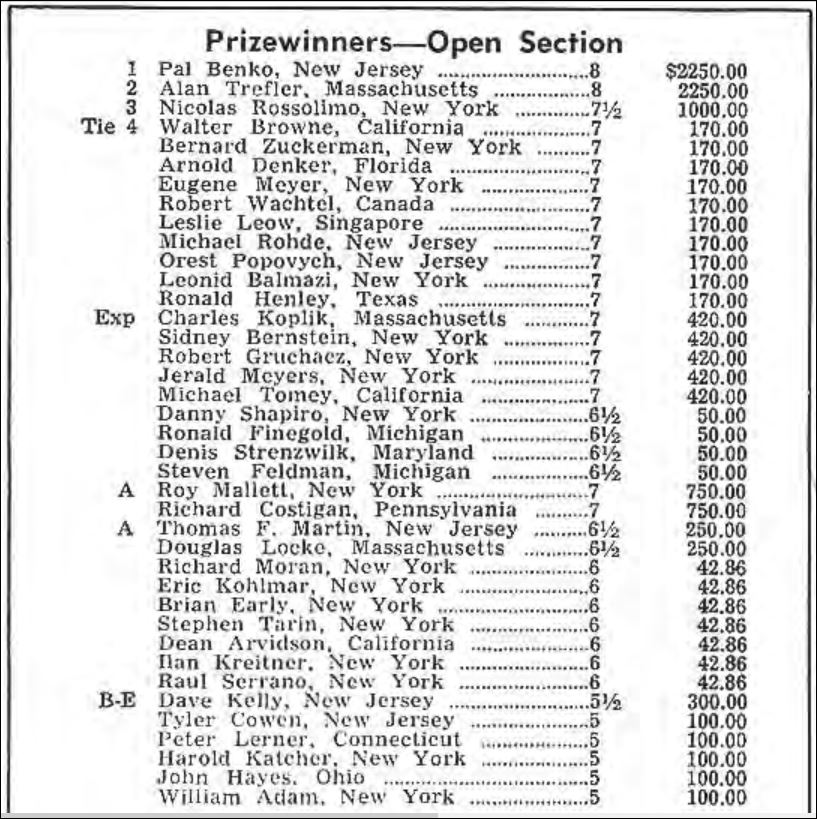
By the way one can notice interesting names, one is the father of GM Finegold, Ronald, in Georgia we had some tournaments organized in his memory, who made a good $50 at the world open, in that time that would be the salary one worker would have for one month work in my country, life was really cheap.
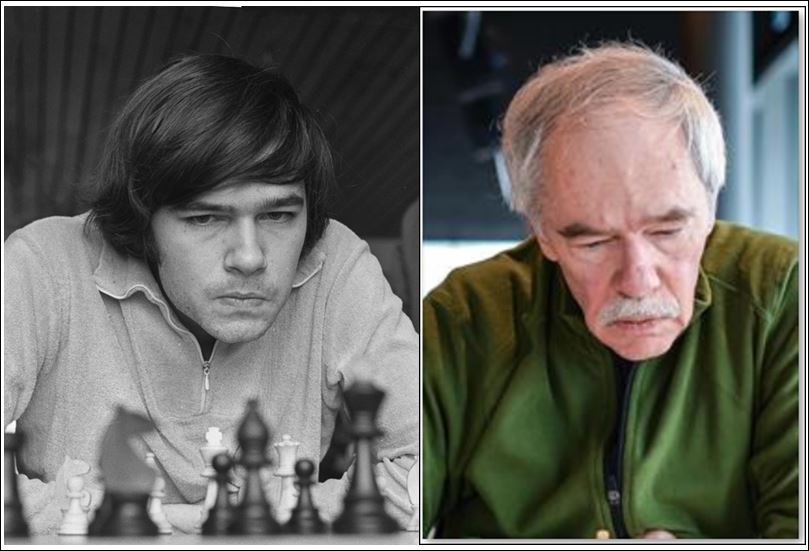
Chapter 3 begins the portraits of the “Heroes of the world open” with Walter Browne who won three times the world open in 1973, 1979, and 1989. GM Browne won the US Championship 6 times! He became GM in 1970, and only another player was made GM that year, try to guess who… a little hint, the one who won the World Championship from Fischer!
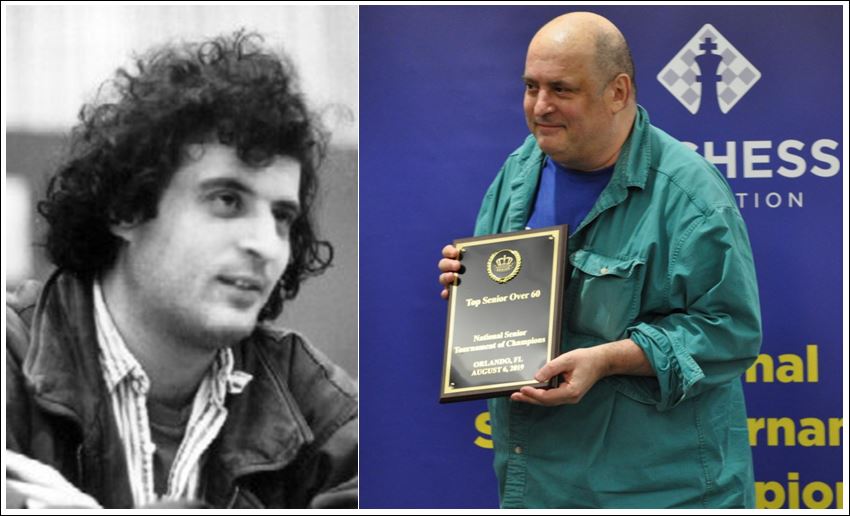
Chapter 4, I saw this World Open Hero in 2018 at the National Tournament of Senior State Champions. Unfortunately he wasn’t able to win the tournament, too many draws. Yet, reading this chapter opened my eyes upon a player who was clearly deeply dedicated to the game. He learned to play like many during the Fischer-Spassky match, and maybe took it seriously a year later, when he was 14, at least this is what the book says. He reached 1st place finisher at the World Open in 1977, if this is true, it took him 5 years to reach the top in one of the most difficult tournaments in the world. And it wasn’t based on luck, because GM Fedorowicz would win it again in 1979, 1982, 1989, and 2000. Honestly the chapter says his rapid growth was fueled by negative emotions, honestly I don’t believe it’s the complete story. Yes, that can give energy, but the guy became a 2500 in 5 years, who does that? Why he didn’t become a contender to the World Championship then?
The chapter is interesting for the amount of games, and anecdotes before a game, giving a historical context.
Chapter 5 is even more interesting, because it portrays an entire decade, with an invasion of chess characters from the Soviet Union. In this chapter there is a titanic battle, 113 moves played between Dzindzichasvili and Seirawan. What I find interesting, is how some players are kind of blessed from the light of Caissa who showers them for a little time, and in that little time they win the World Open and play amazing games, but then it’s someone else turn to be blessed by Caissa. Some of these players disappear like Karman Shirazi. For USCF he stopped playing in 1994, for FIDE he is in France and returned to play in 2001 for long rated games, and 2013 for Rapid and Blitz.
There are 18 more chapters covering illustrious winners like: De Firmian, Shabalov, Gurevich, Nakamura etc. The book even covers the Covid years, showing it’s quite updated. But at this point it would be useless to read a chapter by chapter review. It’s definitely a very interesting book for the research made by the authors in finding the games, annotate them, create a meaningful profile – biography of the World Open Heroes, and a bunch of stories which are quite interesting to read.
Personally I like this book very much, because through its games, over 180, we can witness the history of the World Open in different moments, some decisive moments which defined some careers. Like on a time machine which stops at some critical points in history. At the same time, one can see the strongest players, cannot actually deliver a win in some critical moments. We are not speaking of some amateurs or club players who love the game. We are speaking of players who do that from when they were 5-6 years old, have had access to different trainers, and played in tournaments all over the world.
Pro and Con: Many of the games come without any annotation. For example let’s take chapter 5, there are 13 games, 7 are not annotated.
Some of the pictures are simply too dark to be seen, an example can still be taken from chapter 5 page 61
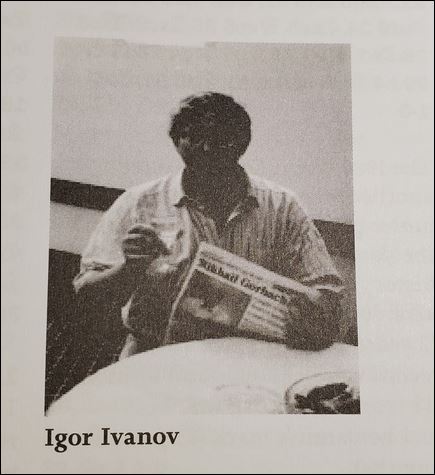
In US, we have this wonderful resource which is Chess Life and Chess Review, practically all issue from the 1930ies are available online to US Chess Members in PDF format. This is a wonderful resource for chess historians. For the World Open 1975 won by Benko and this unknown expert player Trefler, I found in the issue which had an article, and found out there were 3 more games played by Trefler in such tournament. They were in descriptive. I wished the authors would have included them, but that needed real research instead of using Megabase 2021. Trefler lost the first game, but won all the other 8!
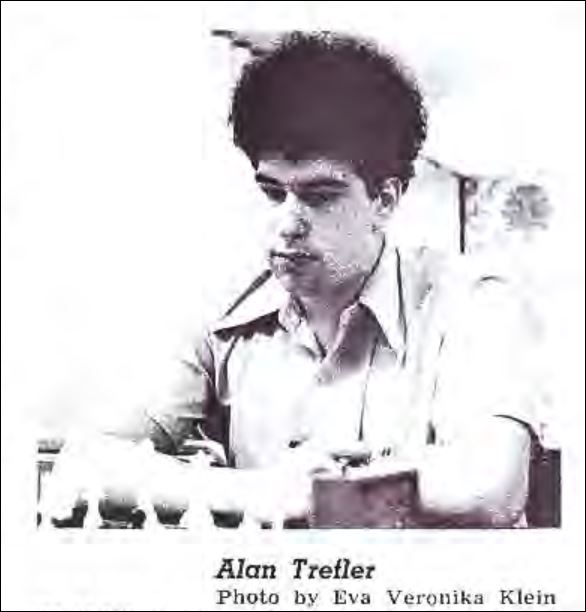
Final Thoughts: In a publisher market where most books are dedicated to openings, with big database dumps nobody really understand, and the books on chess improvement where there is no actual improvement, because the online blitz ratings don’t really give someone chess understanding. I’m quite happy to have this book, because it’s living history. I can replay the games, read about the emotions the players had, imagine their faces, their disappointments when things didn’t go as expected! And know more about the preparation and training ideas they employed to win the World Open. Some books become outdated pretty fast, this is a book which will last a lifetime, because it tell the stories of the World Open heroes!
